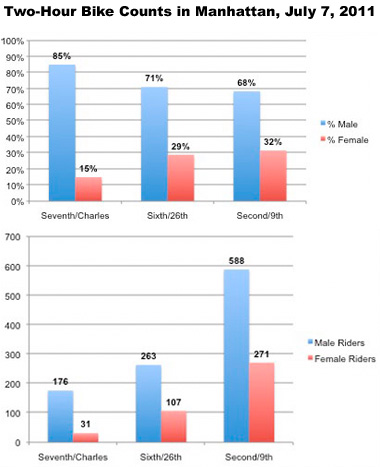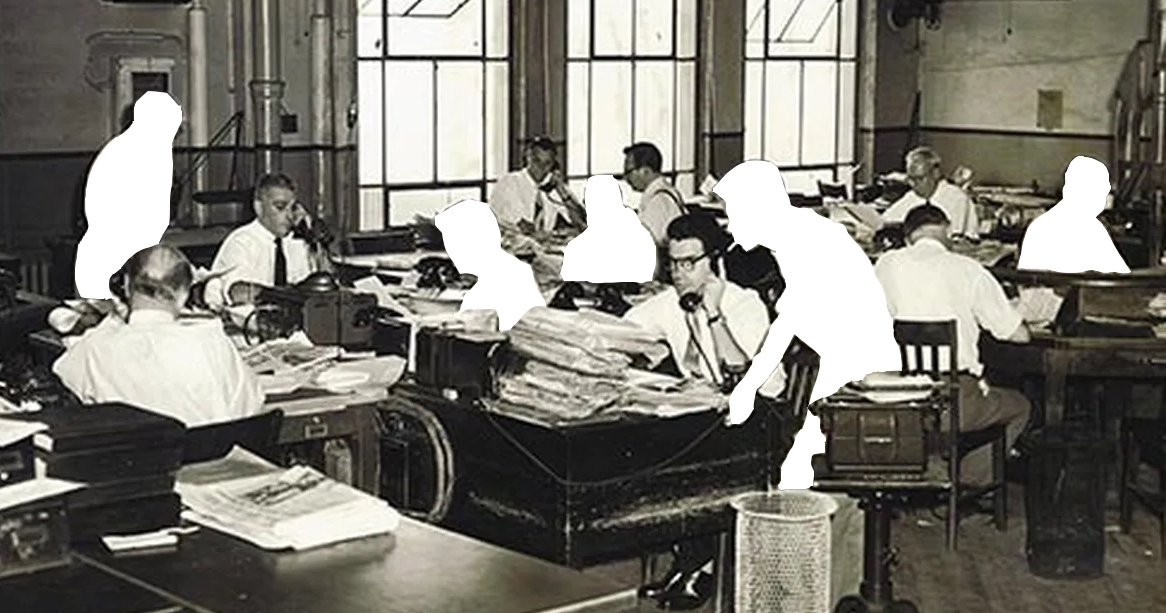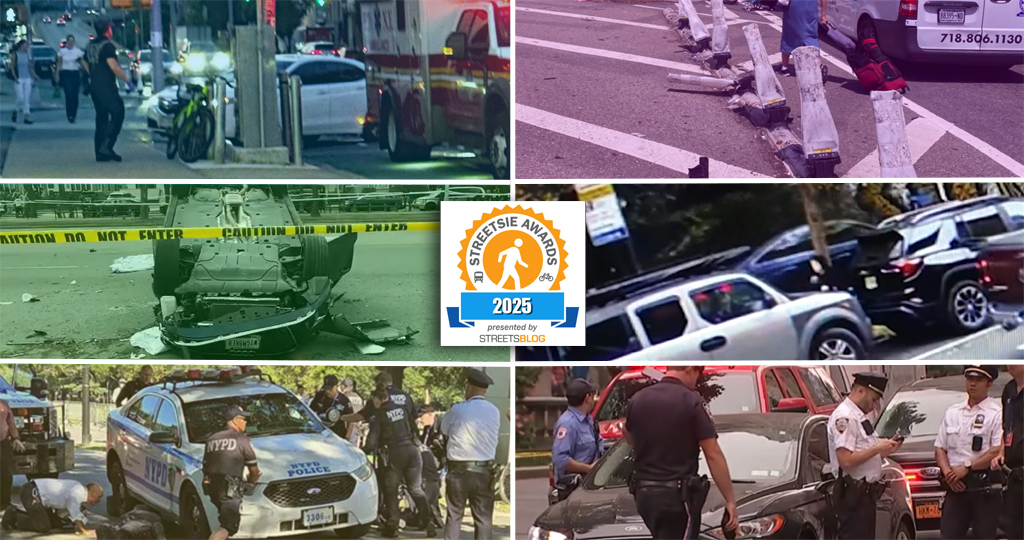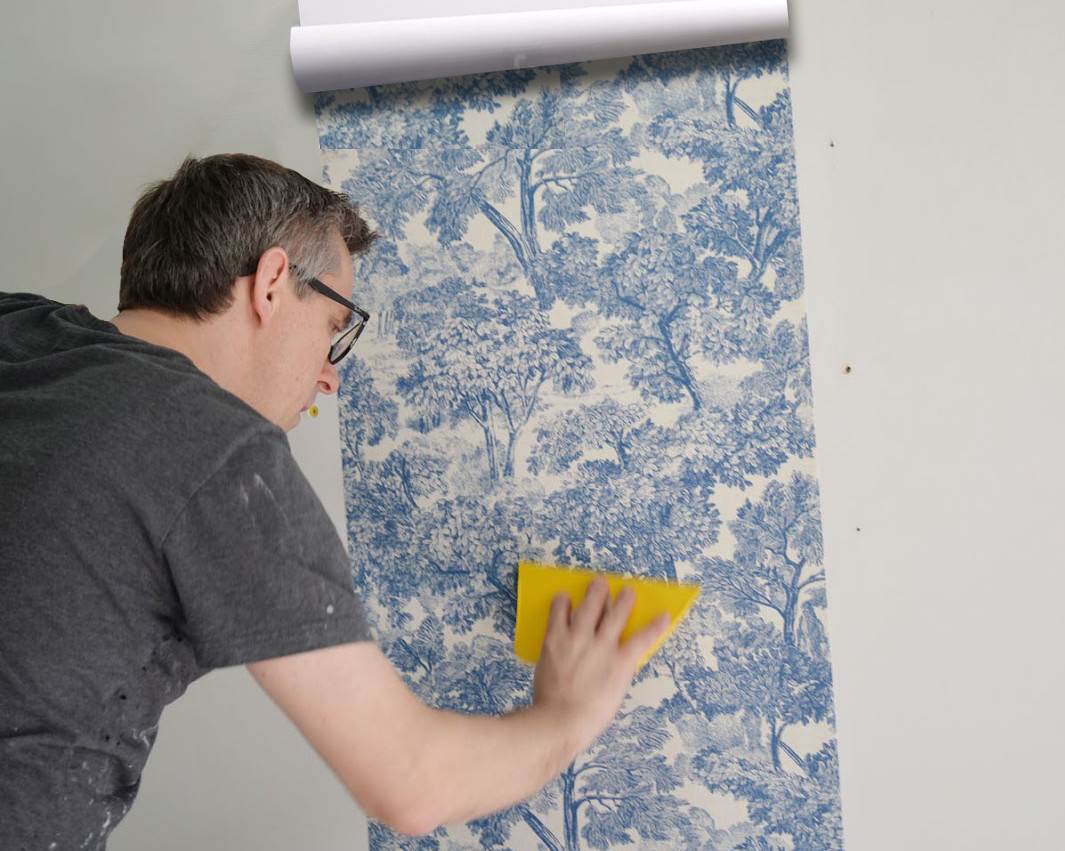The gender gap in American cycling is a thorny and persistent issue, and New York City performs relatively poorly on the measure. The percentage of female bike commuters has wavered between 20 and 25 percent of the total over the last two decades, but with a marked rise in the most recent years.

One of the best ways to narrow that gap, many experts agree, is to create space to bike separated from motor vehicle traffic. New bike counts from Transportation Alternatives provide a bit more support for that theory in the New York City context.
T.A. tracked the number and gender of cyclists at three Manhattan locations over two-hour spans. On Seventh Avenue at Charles Street, cyclists had to ride in mixed traffic; on Sixth Avenue at 26th Street, cyclists could ride in a painted bike lane; and on Second Avenue at 9th Street, cyclists enjoyed a protected lane separated from traffic by parked cars.
As the roads offered more separation for bikes, T.A. counted dramatically more cyclists using them. The effect was particularly dramatic for women: Only 15 percent of the cyclists on Seventh were women, compared to 32 percent on Second.
Those aren't apples-to-apples comparisons -- the share of female cyclists might vary based on the neighborhood in addition to the street design. More telling, perhaps, is a comparison of T.A.'s counts on Second Avenue to older data from the Department of City Planning.
DCP tracked the gender gap of cyclists on Second Avenue two blocks further south, at 7th Street, from 2000 to 2008. During those years, Second Avenue had a buffered bike lane, but not the physically separated one implemented by NYC DOT in 2010. Over the DCP study period, there were an average of 3.74 men riding the lane for every woman. In 2008, the ratio was 3.26:1.
T.A.'s count, in contrast, showed 2.17 men riding the protected Second Avenue lane for every woman, just three years later. That's a fast, though obviously incomplete, closure of the gender gap, and it points the way forward.





